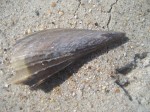 With the intention of reading a story a night, a reader asked yesterday about story collections. I love that idea. No brand new collections to suggest, I’m afraid, but here are three great oldies:
With the intention of reading a story a night, a reader asked yesterday about story collections. I love that idea. No brand new collections to suggest, I’m afraid, but here are three great oldies:
Women & Fiction, edited by Susan Cahill, published in 1975. “Short stories by and about women.” Doris Lessing’s “To Room 19,” Jean Stubbs’ “Cousin Lewis,” Virginia Woolf’s “The New Dress,” Flannery O’Connor’s “Revelation,” Carson McCuller’s “Wunderkind”….Try to avoid the very pink 2002 Signet Classic edition.
You’ve Got to Read This, edited by Ron Hansen and Jim Shepard, published in 1994. “Contemporary American writers introduce stories that held them in awe.” There’s a great story in here by Paul Bowles, “A Distant Episode,” chosen by John L’Heureux. Also, Annie Dillard chooses a James Agee story. Bobbie Ann Mason chooses a Tim O’Brien story. Lorrie Moore chooses a John Updike story….This is a good, solid book.
The Story Behind the Story, edited by Peter Turchi and Andrea Barrett, published in 2004. “26 stories by contemporary writers and how they work.” I was fascinated by Stephen Dobyns’ explanation of how he wrote his story, “Part of the Story.” He was inspired by Raymond Carver’s method. “…the first sentence had come into his mind and he just followed it.” Also, stories by Margot Livesey, Charles Baxter, Andrea Barrett, Robert Boswell….
Others worth mentioning:
- Best American Short Stories of the Century, edited by John Updike
- Best American Short Stories 2008, edited by Salman Rushdie
Then there’s The New Yorker and One Story.
As far as the initial question, I assumed anthologies, but here are two new single author collections:
- My Father’s Tears by John Updike, out today and reviewed in WSJ book review mentioned yesterday.
- Do Not Deny Me by Jean Thompson, out June 9th. Loved her collection, Who Do You Love. Also reviewed in WSJ book review mentioned yesterday.
Of the single author collections I’ve read in the last couple of years, I would recommend:
- Don’t Cry by Mary Gaitskill
- Last Night by James Salter
- Olive Kitteridge by Elizabeth Strout
- Animal Crackers by Hannah Tinti
So many good stories, apparently I could go on and on…



You must be logged in to post a comment.